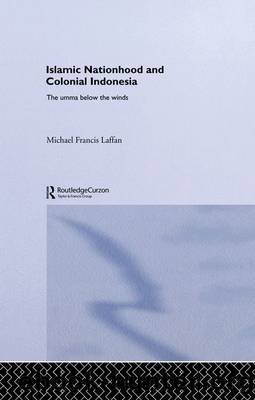Islamic Nationhood and Colonial Indonesia (SOASRoutledge Studies on the Middle East) by Michael Francis Laffan

Author:Michael Francis Laffan [Laffan, Michael Francis]
Language: eng
Format: epub
Publisher: Taylor and Francis
Published: 2003-09-01T18:30:00+00:00
Al-Imam (1906â08): The First Channel of Cairene Discourse in the BilÄd Al-JÄwa
Let there arise from you an umma, inviting to all that is good, enjoining what is right and forbidding evil.
(QurâÄn 3: 104)
As in West Asia and the Middle East, the success of modern mass-movements in Southeast Asia depended on the existence of an active indigenous press and a body of literate subscribers. Once this was achieved with the birth of al-Imam Cairene reformism could make its real debut below the winds. Wider attention was first drawn to al-Imam in Roffâs The Origins of Malay nationalism (1967). And, although re-examined by Abu Bakar Hamzah (1991) and Milner (1995), the presentation by al-Imam of a new idealized community as drawn from specifically Cairene discourse remains under-emphasized, at least in English sources. More recently, Abdul Aziz Mat Ton (2000) has devoted a study to the political aspects of al-Imamâs programme, reproducing many valuable sections of the journal. But while he makes many important observations, Abdul Aziz pays little attention to the precise Cairene milieu from which much of its ideology was derived, and has overdrawn the relationships between the WahhÄbÄ«ya and the thought of al-AfghÄnÄ« and Ê¿Abduh. Further he has overemphasized the aspect of anti-colonialism and underplayed the very ardent self-critique in al-Imamâs pages.
An imÄm is, as in the case of Aḥmad Khaá¹Ä«b, a (prayer) leader or guide. The editors of this journal clearly believed that they were sent to guide the Muslim community below the winds and referred to their audience as âthose ledâ (al-maʾmÅ«m, see vol. 1, no. 1, 23 July 1906). However it was not just reformist leadership that was disseminated by this journal. In their attempts to raise the level of the Malay bangsa, the editors also promulgated an Arabized language of homeland (watan) and community (umat). This was derived from their reading of the Cairene press and applied to the models proposed by competitor organs such as the Utusan Melayu (Malay Messenger, see Milner 1995: 89â113).
Singapore was an appropriate site for the introduction of modern Cairene discourse for a number of interconnected reasons. Most crucially we may recall that it was the major staging point for the Ḥajj. Moreover, the strong commercial links associated with the shipping of pilgrims interacted with the political and economic links of the British Empire. Cairo and Singapore respectively marked the Western and Eastern termini of Britainâs dominance of the Indian Ocean. British dominance not only facilitated communications, but a relatively relaxed attitude to the indigenous presses allowed new organs to flourish where they might have been stifled by conservative Malay rajas or Dutch officials.
Singapore was also a meeting point for the ecumenes of Islam, and many Indian and Hadrami entrepreneurs had long settled there with local Malay wives and families. As their familial and commercial networks similarly stretched across the Indian Ocean and intersected with colonial networks, they also served as one more key in the transmission of Cairene ideologies. It is worth recalling that the first students to venture to
Download
This site does not store any files on its server. We only index and link to content provided by other sites. Please contact the content providers to delete copyright contents if any and email us, we'll remove relevant links or contents immediately.
| Africa | Americas |
| Arctic & Antarctica | Asia |
| Australia & Oceania | Europe |
| Middle East | Russia |
| United States | World |
| Ancient Civilizations | Military |
| Historical Study & Educational Resources |
The Story of China by Michael Wood(927)
Mr. Selden's Map of China by Timothy Brook(775)
Philippines--Culture Smart! by Culture Smart!(669)
Heroic Hindu Resistance To Muslim Invaders (636 AD to 1206 AD) by Sita Ram Goel(655)
Akbar: The Great Mughal by Ira Mukhoty(651)
The Meaning of India by Raja Rao(631)
Vedic Physics: Scientific Origin of Hinduism by Raja Ram Mohan Roy(624)
Food of India by unknow(617)
Banaras by Diana L. Eck(613)
India--Culture Smart! by Becky Stephen(602)
First Platoon by Annie Jacobsen(601)
China Unbound by Joanna Chiu(601)
Mao's Great Famine: The History of China's Most Devastating Catastrophe, 1958-1962 by Frank Dikötter(594)
North of South by Shiva Naipaul(590)
Insurgency and Counterinsurgency by Jeremy Black(564)
How to Be a Modern Samurai by Antony Cummins(563)
A History of Japan by R.H.P. Mason & J.G. Caiger(561)
The Genius of China: 3,000 Years of Science, Discovery, and Invention by Robert Temple(561)
The Digital Silk Road by Jonathan E. Hillman(550)
